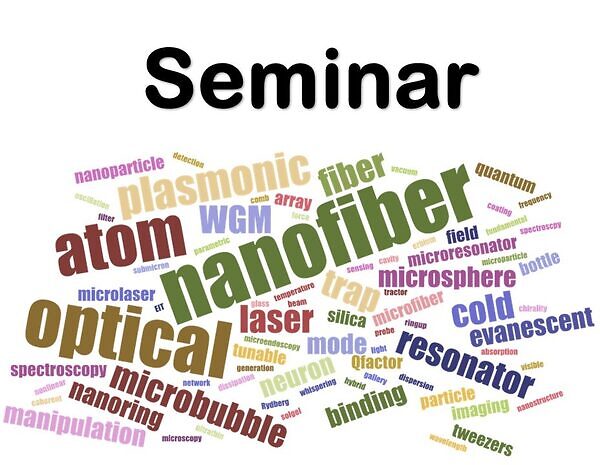[Seminar] 'Optical manipulation applications from soft matter to biomechanics' by Dr Sergides

Date
Location
Description
Speaker: Marios Sergides, Ph. D
Department of Physics, University of Cyprus, Cyprus
Title: Optical manipulation applications from soft matter to biomechanics
Abstract:
Light-induced forces can influence matter by means of exchanging momentum and can be used to manipulate micro- and nano-sized particles, biological matter and even atoms. Since the realization of optical tweezers, the field of optical manipulation has progressed beyond simple trapping to include more complex operations. This seminar aims to demonstrate work done using different optical manipulation techniques in the areas of biophysics and soft mater science.
Mechanical signals occurring at the interface between cell membrane and extracellular matrix and at intercellular junctions trigger biochemical signals that are fundamental for cell growth, development and regulation. Ultrafast force-clamp spectroscopy is a single-molecule technique based on optical tweezers, for investigating actin-protein interactions under constant force with sub-millisecond and sub-nanometer resolution. This technique was applied to study the α-catenin-actin interaction in a range of physiological pN forces. More specifically, single α-catenin homodimers and single α/β -catenin heterodimers under force were studied. While single homodimers exhibit a resistance to force with increasing lifetime with force, the single heterodimers rapidly detach and reattach to actin, with increasing detachment rates as the applied force increases.
Next, a combination of optical tools is proposed to manipulate single cells and measure the propagation of mechanical and biochemical signals inside them. Optical tweezers are used to trap microbeads used as handles to manipulate the cell plasma membrane while genetically encoded FRET-based force sensors inserted in F-actin and alpha actinin are used to measure the propagation of mechanical signals to the cell cytoskeleton.
Finally, an experimental setup capable of combining evanescent field optical manipulation and fluorescence excitation of colloidal quantum dot (QD) microspheres is presented. Evanescent fields here are generated on a glass-water interface by two different laser sources: one for particle manipulation and another for photoluminescence excitation. The experimental data reveal enhancement of the photoluminescence intensity of the QD microspheres when optically bound due to radiative energy transfer mediated via the formation of whispering gallery modes.
Subscribe to the OIST Calendar: Right-click to download, then open in your calendar application.



